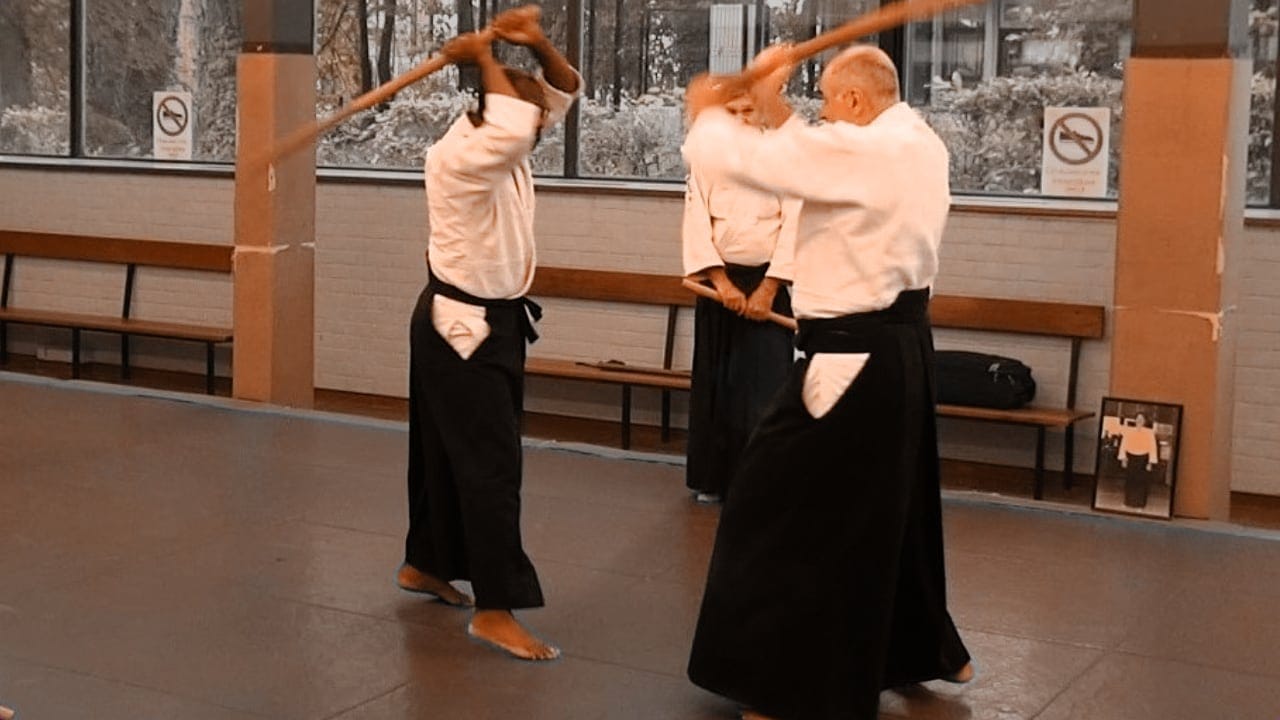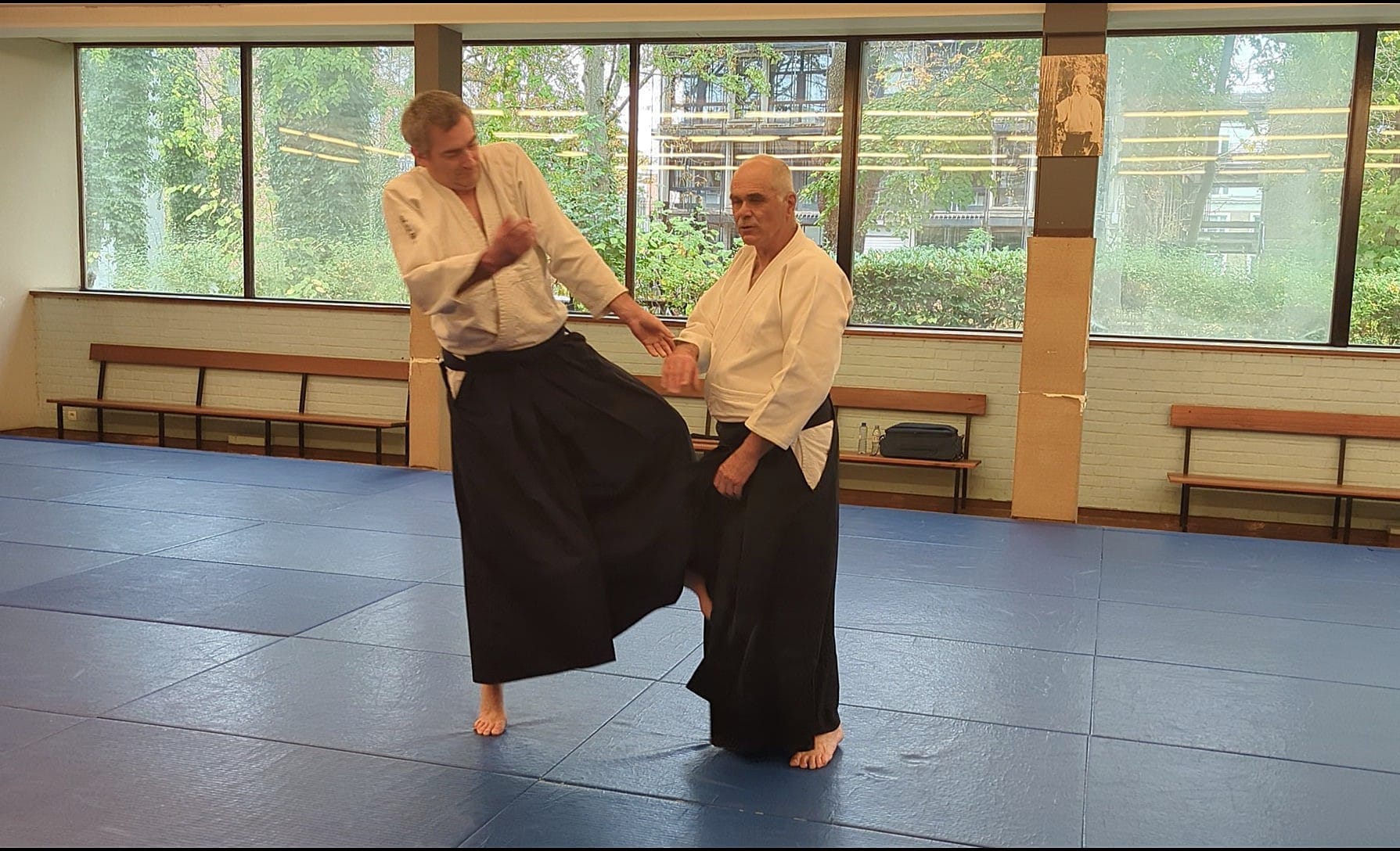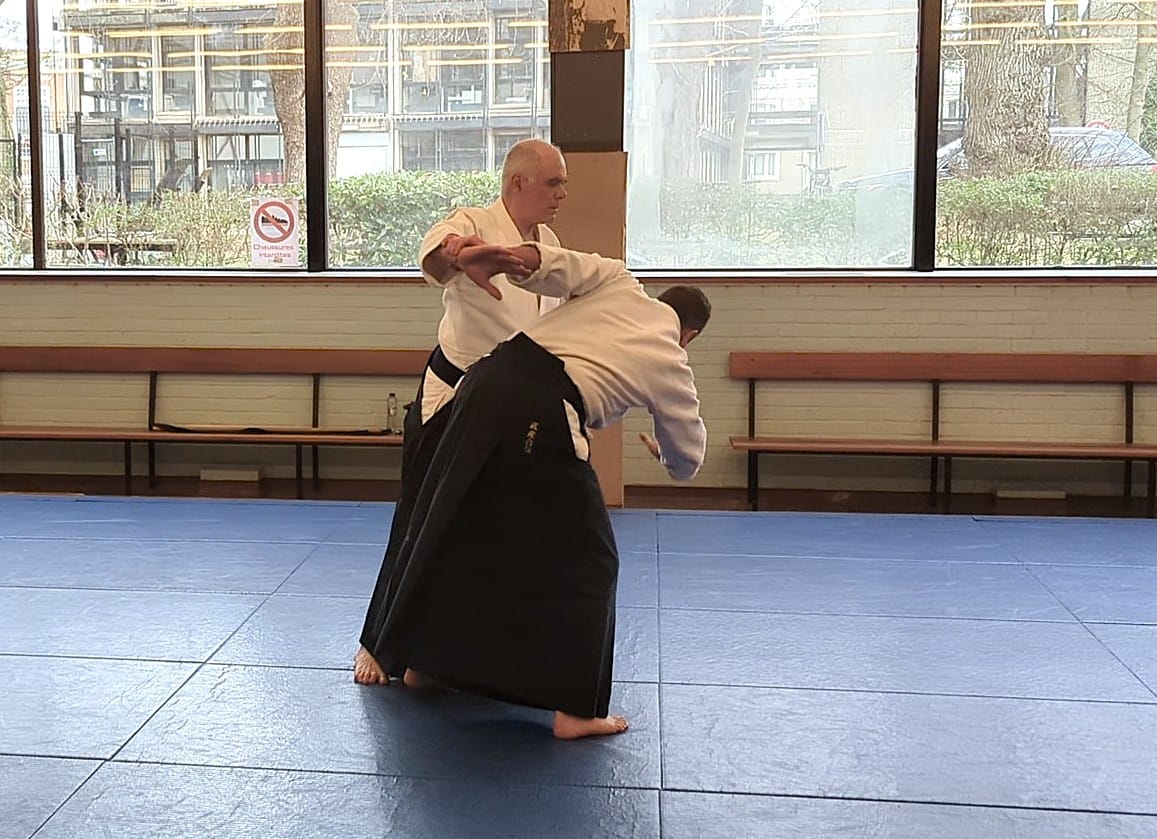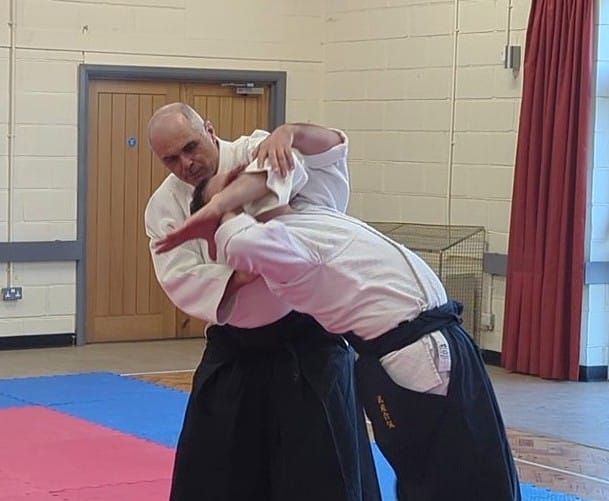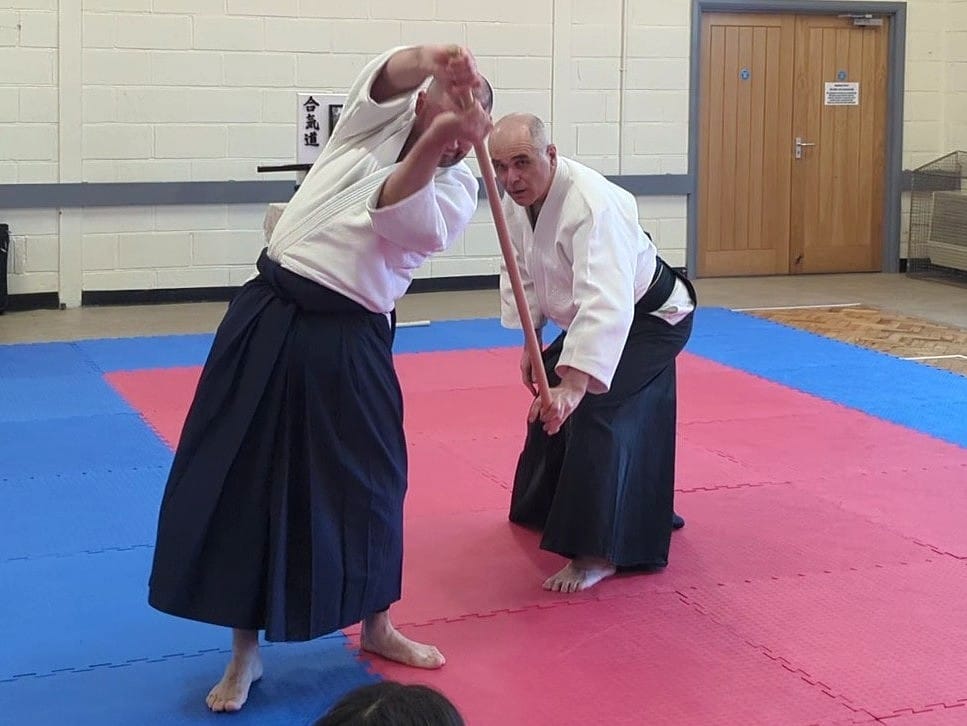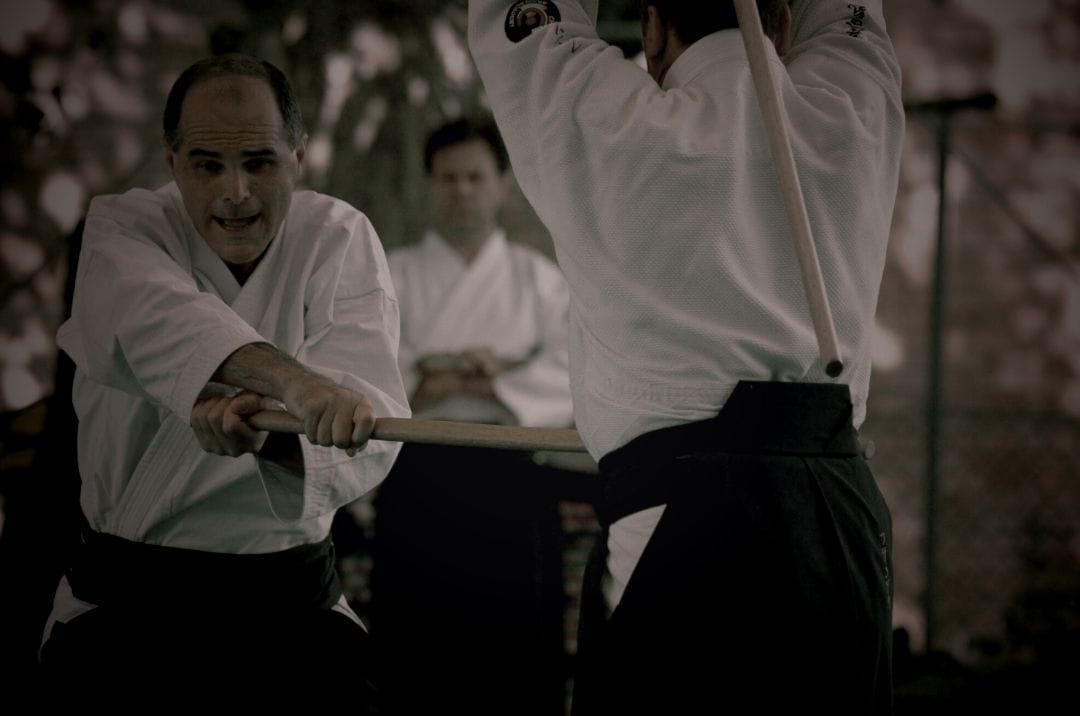If you don't understand the suburi you can't understand the kumitachi, if you don't understand the kumitachi you can't understand Aikido.
The right gesture is not right by any convention, it is right because it respects the law of cause and effect.
The position occupied by the sword at a given moment has an obligatory consequence on the movement that follows. In this sense, the sword decides on the movement even more than the man who wields it; the sword has a kind of life of its own that must be respected.
The video explains why suburi n°7 cannot be different from what it is, and why it is yokomen and not shomen that follows a tsuki :
When you handle a sword according to the laws of Aiki, your hands never leave the central axis of your body, whether you are cutting or thrusting, this rule is absolute:
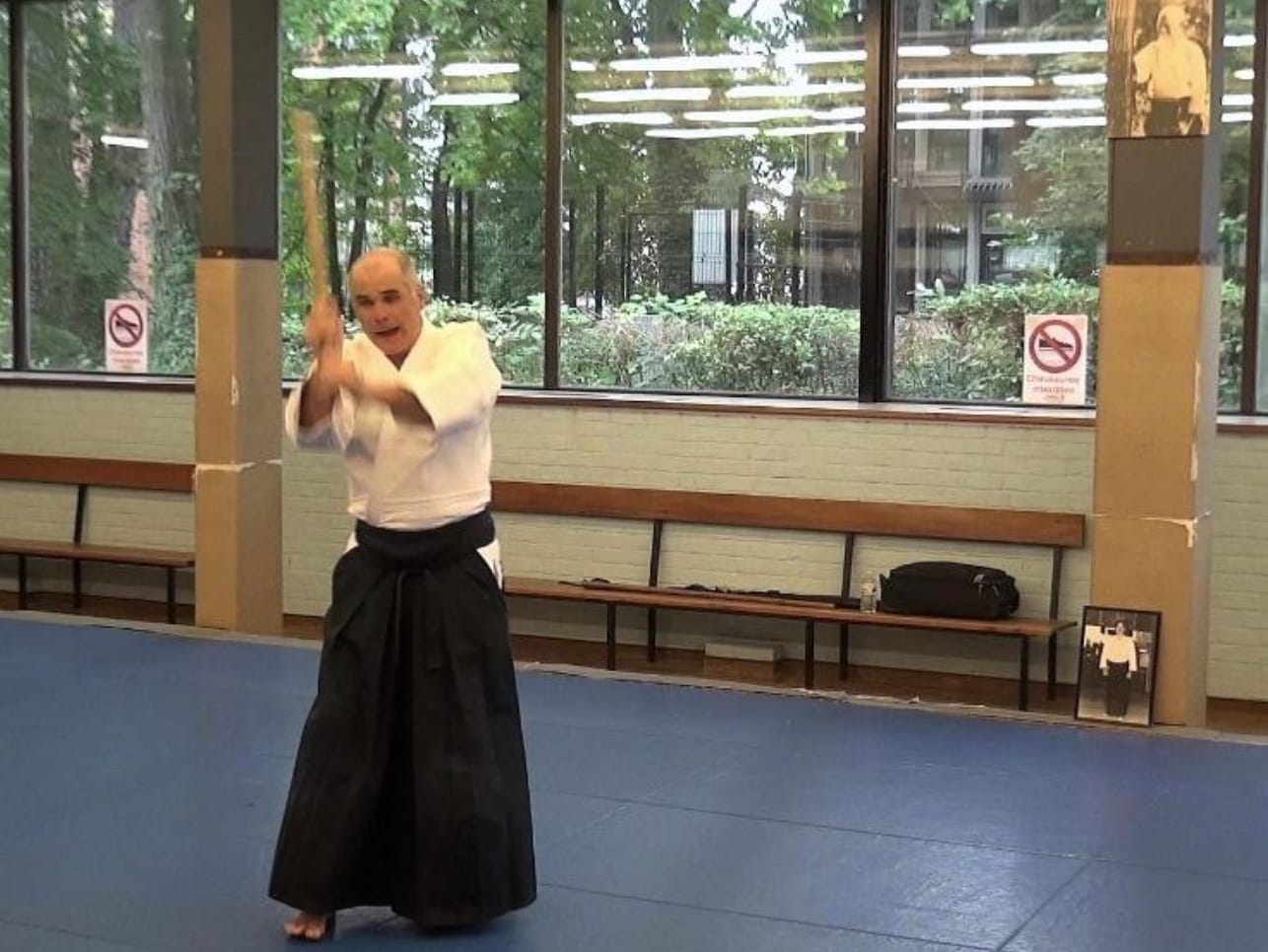
There are two consequences to this rule:
1°/ If the sword is straight at the start of the movement, it goes straight up and straight down, it cannot be otherwise. This action is called shomen. Shomen is not possible if these conditions are not met.
2°/ If the sword has an angle at the start of the movement, the vertical rise of the hands forces it to rise at this angle. Here again it cannot be otherwise. But if it rises on one side at an angle, it necessarily descends on the other side at the same angle, passing of course through the top of the skull. This action is called yokomen.
There is nothing else with the Japanese sabre other than these two cuts, to which is added the tsuki. Three strikes then.
Suburi n°7 is the logical combination of a tsuki and a yokomen.It's the one found here at the end of kumitachi no. 4.
To understand:
- The reason for suburi n°1, 2, 3 and 4 is the practice of shomen,
- The reason for suburi n°5 is the practice of yokomen (left and right),
- The reason for suburi n°6 and 7 is the practice of tsuki. This practice is associated with yokomen because it could not naturally be associated with shomen.
There is no other suburi than these.Shomen, yokomen, tsuki, the three strikes of the Japanese sword.

